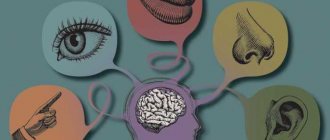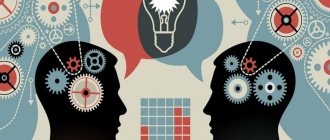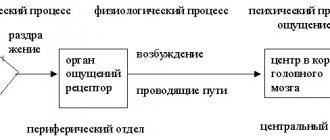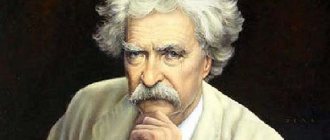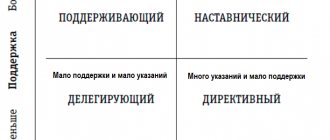Meaning of Perception
The sense organs are conductors and intermediaries between man and the outside world. It is they (visual, auditory, olfactory, tactile, gustatory) that provide a holistic perception of the environment, receiving irritant signals on the receptor surfaces. As a result, a person receives a complete understanding of objects and phenomena, their properties and qualities, and builds his “relationships” with them.
In addition to sensations, the perception of the world is provided by thinking, speech, memory, therefore the perceptual activity of an individual is a complex cumulative process that depends on many individual properties of his psyche.
Properties of perception
Perception ensures the functioning of various mental processes.
The perception of an object as a specific image, regardless of its location, provides such a property of perception as objectivity.
Simultaneously with the perception of an image (natural or, for example, drawn), its properties are also reproduced in consciousness.
- Such a property as integrity is expressed in the fact that an object is recognized regardless of whether all its parts are present, whether they are distorted, or whether their location in the object is incorrect.
- The meaningfulness of perception during the normal functioning of the human psyche can be traced in the fact that the observed object is correlated with a specific class, category (classified).
- Observed objects (or situations) are perceived as unchanged, even if the conditions of their demonstration change. So, for example, by feeling an object in complete darkness, a person can correctly determine what it is and name its main characteristics. This property of perceptual activity is called constancy.
- This property of perception, such as structure, allows you to perceive the environment reliably, even if sensations are not connected. The expression “glass surface of a lake” paints a specific image of a perfectly smooth, shiny, bluish-greenish surface of a reservoir.
- The individual state of mind necessarily influences perception: stormy weather delights some, but frightens others immensely and creates a state of panic. This property of perception is called apperception.
- Perception depends on the conditions in which it occurs. The perception of the same thunderstorm in a real situation and, for example, when watching a movie, will occur differently, which is where such a property of perception as contextuality manifests itself.
Definition, Pros and Cons
Reflection - what is it in psychology, definition
A perceptive person is a keenly feeling person. This state of mind has its advantages and disadvantages. Like the noun, the word perceptive comes from the Latin perceptio, meaning perception. The main disadvantage of a person with heightened senses is that even the slightest sound, visual or tactile stimulus can throw him off balance. The advantages are that such an individual can easily find a common language with any person, and is also very receptive to different types and genres of art. Parents and teachers should make the most of these qualities of the child and develop them. Typically, such individuals from childhood are distinguished by giftedness and talent in any particular field of activity.
The nature of the perception process
The external environment and its individual objects and phenomena influence the senses through analyzers. Their complex interaction ensures the flow of information into the brain centers and its processing.
Complex analysis and synthesis of external data ensure the creation of a holistic image: external and hidden, internal properties and qualities of the object are determined. That is, a number of its characteristics are formed.
The process of perceiving the same object is unique, as is its mental image, since they depend on the individual mental and physiological characteristics of a person. Life principles, views, motives, interests, preferences as the results of upbringing and lifestyle certainly determine the assessment of the properties and qualities of an object. For example, the same work of art can be emotionally assessed by different observers as “strikingly beautiful” and… “disgusting.”
Formation of perceptual and artistic images. educational and methodological material on the topic
Formation of perceptual and artistic images.
The mental process of reflecting individual properties of the surrounding world and internal states of the body under the direct influence of stimuli on receptors of the corresponding modality is called sensation.
According to the nature of reflection and location of receptors, sensations are divided into:
Exteroceptive - reflect the properties of things and phenomena of the external world. Receptors are located on the surface of the body.
Interoceptive - reflecting the state of the internal organs of the body. Receptors are located deep in the body tissues or on the surfaces of internal organs.
Proprioceptive - reflect information about the position and movement of the body; receptors are located in muscles, tendons and on articular surfaces.
Different types of sensations are characterized by a number of common properties:
- the quality of sensation is characterized by a combination of specific features that distinguish this sensation from others
-the intensity of sensation is determined by the strength of the current stimulus and the functional state of the receptor at the moment of exposure to the stimulus
-the duration of the sensation depends on the functional state of the receptors, the duration of action and the intensity of the stimulus
-spatial localization of sensation characterizes the location of stimuli in space.
The ability to distinguish sensations is called sensitivity.
The absolute sensitivity of the sensory organs is determined by the minimum value of the stimulus, which under given conditions causes a sensation - this is the value of the stimulus that causes a barely noticeable sensation, which is called the lower absolute threshold of sensitivity (the lower the value of the threshold of sensations, the higher the sensitivity to these stimuli). The upper absolute threshold of sensitivity is equal to the maximum strength of the stimulus, at which adequate stimuli of sensation continue to arise.
The values of the lower and upper absolute sensitivity thresholds are not constant and can change under the influence of:
- current stimuli (their strength and duration);
- other simultaneously acting stimuli;
- nature of activity;
- functional state of receptors, etc.
Differential sensitivity (sensitivity to differences) is the ability to perceive subtle differences between stimuli in their strength and quality. The minimum difference in strength or quality between stimuli that produce noticeable differences in sensation is called the differential threshold (or difference threshold).
The differential threshold for stimuli of medium strength is proportional to a value constant for a given analyzer. The basic psychophysical law of G. Fechner states: the magnitude of sensations is directly proportional to the logarithm of the intensity of the stimulus. Differential sensitivity is also inversely related to the value of the differential threshold.
The sensitivity of analyzers may vary depending on a number of physical, physiological and mental conditions. One of these conditions is adaptation. Adaptation (adjustment) is a change in sensitivity under the influence of a stimulus. It may manifest itself as:
1) disappearance of sensations with prolonged exposure to the stimulus;
2) loss of sensation when exposed to a strong stimulus;
3) increased sensitivity under the influence of a weak stimulus.
Sensitivity can increase as a result of the interaction of different analyzers and/or its exercise. This phenomenon is called sensitization.
The modality of sensation is a qualitative characteristic of sensations, indicating their belonging to certain sense organs. For example, tactile, auditory, visual, etc. modalities. For example, a sound effect that evokes visual images.
— The interaction of sensations of different modalities leads to another phenomenon - synesthesia. Synesthesia is the occurrence of sensations of one modality under the influence of irritation of the analyzer corresponding to another
Perception is the cognitive process of reflecting objects and phenomena with their direct impact on the senses. Unlike sensations, perception reflects not individual properties, but objects as a whole; this is a qualitatively higher level of cognition.
Depending on the analyzers involved in perception, the following types of perception are distinguished:
| - taste, - olfactory, | - kinesthetic, - tactile, | - auditory, - visual. |
Depending on the form of existence of matter (space, time, motion), the following are distinguished:
| - perception of space, | - perception of time, | -perception of movement. |
Features of perception are the volume of perception and such properties as: 1-objectivity, which manifests itself in the relevance of the products of perception to the surrounding world; 2-integrity, which manifests itself in the unity and complexity of the products of perception; 3-structurality, which is realized in the abstraction of sensations (perception is not the sum of sensations, but is a process of abstraction of a certain structure from these sensations); 4-constancy, which is understood as the ability of a system of analyzers that provide perception to compensate for insignificant changes in the parameters of an object (due to constancy, objects and phenomena are perceived as relatively constant in shape, color, size, etc.); 5-meaningfulness, since images of perception are always endowed with a certain semantic meaning and are associated with thinking, understanding the essence of what is perceived (to perceive an object means to mentally name it, i.e. attribute it to a certain group of objects, generalize it in a word); 6-selectivity, which manifests itself in the preferential selection of some fragments of the perceived world compared to others.
To diagnose sensations, various instrumental psychophysiological techniques are mainly used, aimed at diagnosing:
-absolute sensitivity (upper and lower thresholds of sensitivity of various sense organs);
-differential sensitivity (study of the differential sensitivity threshold for various sense organs, adaptive capabilities and sensitizing factors);
-the leading (predominant) modality of world perception. To diagnose the volume of perception, the technique of short-term exposures is often used.
For example, W. Jevons used a plate placed in the center of a black tray onto which he threw a handful of black beans. However, there remained an indefinite number of them. The subject had to name the number of beans in the plate without counting them.
More modern instrumental psychophysiological methods for diagnosing the volume of perception use a tachistoscope - a device for visual presentation of objects with adjustable exposure time. There are various types of tachistoscopes. In any case, when assessing the volume of perception, the following conditions must be met:
1) before exposure, the visual field should be the same brightness as during exposure of objects;
2) before exposure, the visual field must have a fixation point, which allows objects to be exposed to the center of the visual field and contributes to the concentration of the subject’s attention;
3) the presentation of objects must be optimal, i.e. sufficient for clear perception and short-lived as a one-act perception.
To diagnose the properties of perception, a series of specific tests and experiments are used with recording and statistical processing of the results.
Formation of perceptual images.
Firstly, the “place” of reflection of the image of perception is the psyche, and not the brain or consciousness. A.R. Luria (1902-1977) said that a brick is reflected in the brain when it falls on the head. The perception of a brick is its reflection in consciousness. But the image of perception is not necessarily conscious, i.e. dividing the reflected world into objective and subjective. Consciousness, of course, can participate in human perception, and this happens when attention is connected to perception. Meaningfulness as a quality of perception is not the same as its awareness.
Secondly, the peculiarity of perception lies in the reflection of the object as a whole, as such, and not a mechanical set of individual properties. The reason for such objective integrity of perception is not only the “summation” of images of various sensations, not only the presence of a corresponding physiological “picture”. In objective perception, the participation of memory, thinking, and human experience is necessary.
Finally, the third point highlighted in the definition of perception distinguishes it, for example, from imagination and memory, in which a subjective image exists at the moment of the objective absence of the reflected object.
The specifics of perception are convincingly revealed through the interpretation of its basic properties, the number and name of which varies among different authors. But the point comes down to this.
1. The main property of perception is its objectivity, which is combined with the property of integrity, and often meaningfulness. To reflect an object means to see (or hear) something holistic, functionally complete, necessary for something, and having a certain meaning. The objective world is objective, but not everything from it is isolated and reflected objectively in the form of a discrete image of perception. Something remains subjectively not perceived, not understood, and has not found “application,” although it may be reflected objectively physiologically. A person mentally “closes” even incomplete contours and turns them into objects known to him.
2. The image of perception has the property of generality (categoriality), which directly follows from the quality of objectivity and is a consequence of the participation of speech in it. The perceived object is named, which means it is classified and belongs to a certain category. The subject is generalized with others of the same name. In this universal property of perception, significant individual differences are possible.
3. The third property of perception is its relative constancy, which refers to the perception of the shape, color, size (distance) of an object, regardless of sharply changing objective conditions of perception.
The formation of artistic images is possible thanks to perception and imagination.
Perception is the cognitive process of reflecting objects and phenomena with their direct impact on the senses. Unlike sensations, perception reflects not individual properties, but objects as a whole; this is a qualitatively higher level of cognition.
Depending on the analyzers involved in perception, the following types of perception are distinguished: auditory, visual, kinesthetic.
Depending on the form of existence of matter (space, time, motion), there are: perception of space, perception of time, perception of motion.
Diagnosis of the characteristics of perception comes down to studying the volume of perception and such properties as: - objectivity, which manifests itself in the relevance of the products of perception to the surrounding world; — integrity, which manifests itself in the unity and complexity of the products of perception; - structure, which is realized in the abstraction of sensations (perception is not the sum of sensations, but is a process of abstraction of a certain structure from these sensations); — constancy, which is understood as the ability of a system of analyzers that provide perception to compensate for insignificant changes in the parameters of an object (thanks to constancy, objects and phenomena are perceived as relatively constant in shape, color, size, etc.); — meaningfulness, since images of perception are always endowed with a certain semantic meaning and are associated with thinking, understanding the essence of what is perceived (to perceive an object means to mentally name it, i.e. attribute it to a certain group of objects, generalize it in a word); - selectivity, which manifests itself in the preferential selection of some fragments of the perceived world in comparison with others.
Imagination is a cognitive process of creating new images (representations) of objects and phenomena based on previously perceived ones, i.e. a process that transforms reflective reality based on the processing and mental reconstruction of ideas remaining in a person from past experience. Imagination is a special form of mental processes that occupies an intermediate position between perception, thinking and memory.
The basis of imagination is knowledge and impressions.
Imagination is characteristic only of the human psyche. Thanks to imagination, a person creates, intelligently plans his activities, and manages them. Almost all human material and spiritual culture is a product of people's imagination and creativity. The past is recorded in memory images, arbitrarily evoked by an effort of will, the future is represented in dreams and fantasies. Imagination is the basis of visual-figurative thinking, which allows a person to navigate a situation and solve problems.
Imagination differs from perception in that its images do not always correspond to reality; it contains elements of fantasy and fiction. If the imagination draws pictures to the consciousness that have little correspondence with reality, then it is called fantasy. If, in addition: in addition, the imagination is aimed at the future, it is called a dream.
Imagination as a unique form of reflection of reality: - reflects a mental departure beyond the limits of what is directly perceived; -promotes anticipation of the future; - “revives” what was before.
The structure of perceptual action
Any process consists of individual operations - actions. The quality of the result depends on whether they are arranged in the correct sequence and performed without errors.
The process of perception includes a number of perceptual actions, this is due to the fact that a person needs:
- Consciously select information that is significant for him from the multitude that comes through sensory channels.
- Transform it in accordance with your own business objectives.
Perceptual action is several operations to transform sensory information.
Detection—detects the presence of a cognitive stimulus.
Discrimination - a perceptual standard is formed.
Next, the identification process takes place based on such actions as comparison and identification. The received image is compared with the one in memory and belongs to a certain class of objects, that is, it is categorized.
Mastering perceptual actions is a very difficult and lengthy process for a person, requiring special training.
When and how are perceptual skills formed?
The development of perceptual actions guarantees a person a full knowledge of the world around him and maximum adaptation to it. Sensory perception of objects, actions with them, observations expand and improve, replenish the personal experience of the individual.
The formation of perceptual actions begins in children at 2-3 years of age. Senior preschool age and school age are particularly important periods in this regard. The development of children's perceptual actions occurs in the conditions of specially organized systematic and consistent classes in kindergarten and school.
Children, under the guidance of educators and school teachers, discover the objective world for themselves, becoming acquainted with various objects and their properties, learning to analyze them, identifying the most significant ones, which become sensory standards. They are complemented by a system of motor, or motor, skills, which provides the child with a comprehensive “discovery of the world.” Modeling (drawing, manual labor, playing with building materials) allows you to transform mental images into real ones.
Social perception
Social perceptivity is the perception of another person through the prism of specific social attitudes and stereotypes. It is not always adequate. Perceptual actions are a broad concept, which, in particular, includes the assessment of others, focusing on existing norms in society.
Perceptual skills in social terms are skills that allow you to correctly perceive others. They will be useful for teachers, social workers, and psychological service workers. Mastering the essence of these skills is very important. To do this you need:
- be attentive to others;
- try to notice important details;
- perceive the external and internal world of a person as one whole.
All this will help create a correct understanding of other people and the composition of their psyche.
Intensive communication will help you understand another person.
Mechanisms of social perception
The main mechanisms of social perception are:
- thinking using stereotypes:
- reflexive mechanisms;
- empathy (projective ability to transfer the feelings of others);
- identification of a person with any type of personality.
With the help of these mechanisms, the individual sees others in one light or another.
Effects of social perception
Social perception, unlike physical perception, can be characterized by a person’s attitude towards the world around him and other people. The significance of this effect cannot be underestimated, since the simple or complex social adaptation of an individual largely depends on correct perception. Also, this phenomenon directly affects a person’s character and his level of sociability and openness.
Note to parents
Forming a system of perceptual actions in a child is primarily the concern of parents. Firstly, they need to closely monitor the health of the baby’s sensory organs, otherwise their insufficient functioning will make it difficult to perceive the features of objects of cognition. Secondly, one should not rely only on educators and teachers: the development of perceptual actions is one of the goals of family education in the early stages of a child’s life. To do this, we need to help him thoroughly examine objects (what they sound like, how they are structured, what parts they are made of, what they feel, taste and smell), teach him how to operate them, and enrich his vocabulary with nouns (what is this?), adjectives (which one? ), verbs (what does it do?).
Children should be shown pictures and techniques of drawing, modeling, design, and practice comparing objects according to different parameters.
The main method of teaching toddlers and young children is play. Children love playing and doing activities together with their parents. Emotional substantive communication with them stimulates the child’s development of perceptual actions.
